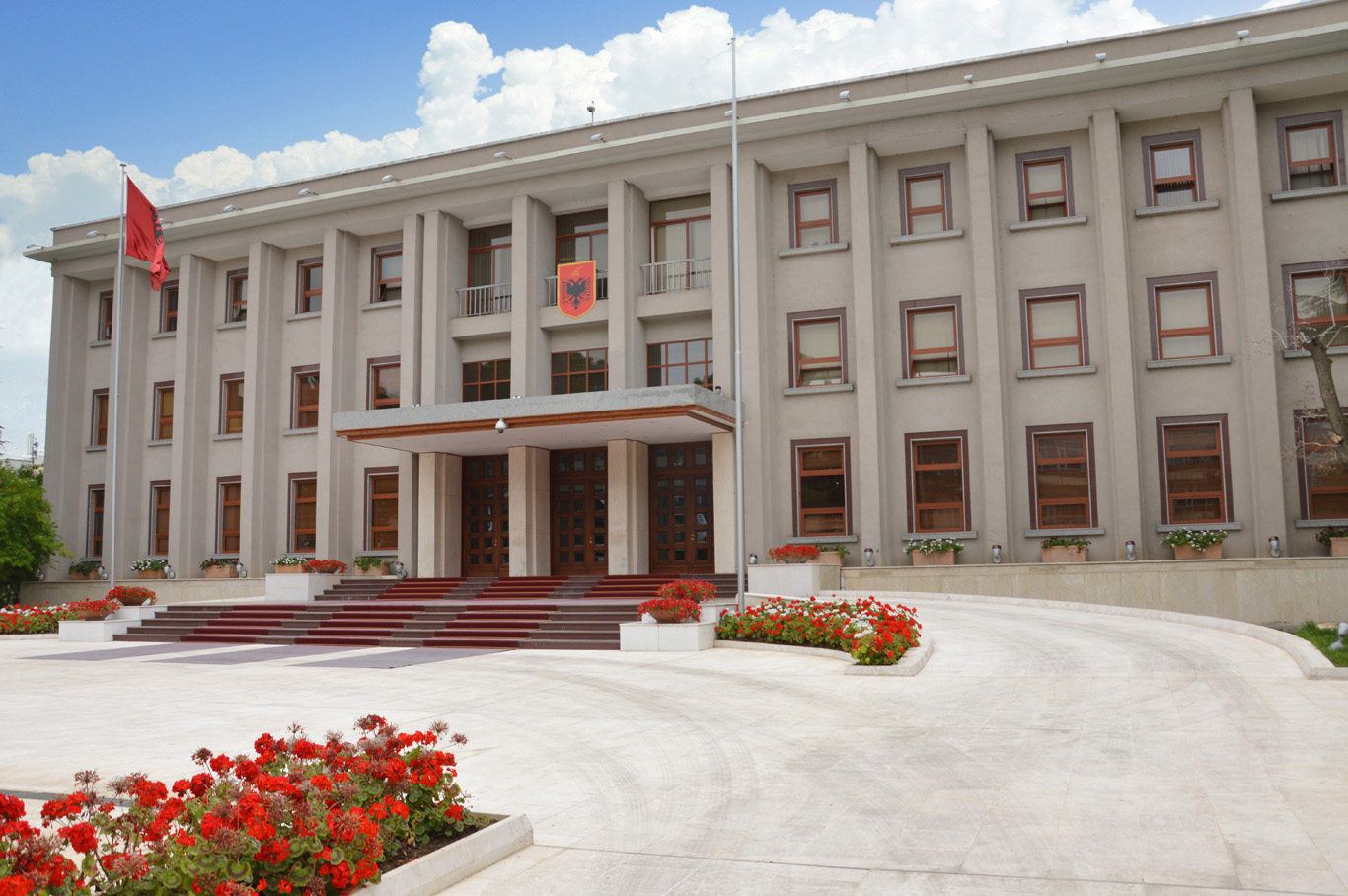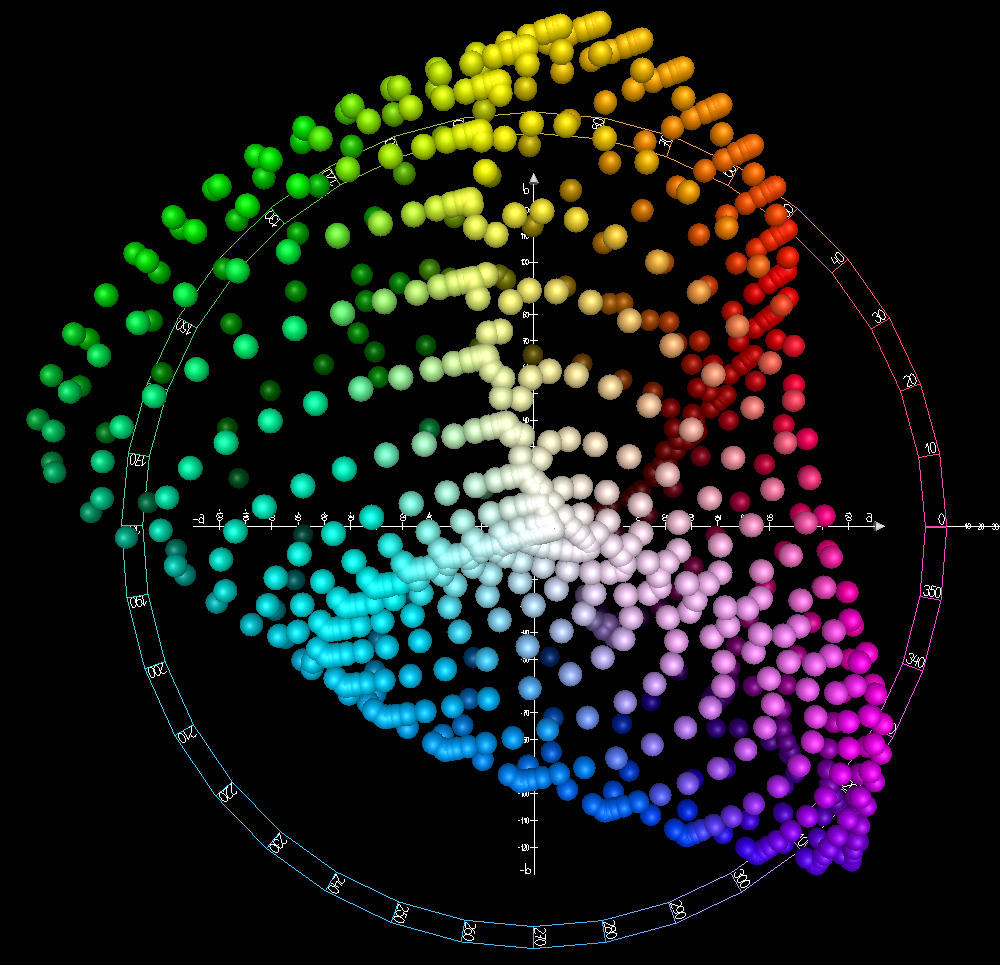|
Coat Of Arms Of Albania
The coat of arms of Albania ( Albanian: Stema e Republikës së Shqipërisë) is an adaptation of the Flag of Albania and is based on the symbols of Gjergj Kastrioti Skanderbeg. It features the black double-headed eagle, documented in official use since 1458, as evidenced from a sealed document uncovered in the Vatican Secret Archive (fund: Miscellanea, vol. XXXIX, doc. 2398), addressed to Pope Pius II and co-sealed by notary Johannes Borcius de Grillis. The stylized gold helmet is partially based on the model of crown-like rank that once belonged to Skanderbeg, currently on display at the Kunsthistorisches Museum in Vienna, first mentioned in 1593 in the Ambras armory inventory and depicted in 1601/03 in the "Armamentarium Heroicum" of Jakob Schrenck von Notzing. The ruler of Austria, Ferdinand II, acquired the helmet from the Duke of Urbino, as confirmed by a letter sent to him from the duke, dated 15 October 1578. The helmet as an integral component in the coat of arms ... [...More Info...] [...Related Items...] OR: [Wikipedia] [Google] [Baidu] |
President Of Albania
The president of Albania ( sq, Presidenti i Shqipërisë), officially styled the President of the Republic of Albania ( sq, Presidenti i Republikës së Shqipërisë), is the head of state, commander-in-chief of the military and the representative of the unity of the Albanian people. The president has the power to set the date of the elections for the Parliament as well as referendum, grants pardons and awards. In case of incapability to discharge duties of office, the speaker of the Parliament assumes the office's powers and duties as acting president until the president resumes those powers and duties, or until election of a new president. The Office of the President of Albania consists of the immediate staff of the president of the country, as well as support staff reporting to the president. The office is seated in the Presidential Office in the capital city Tirana. The Constitution of Albania defines the appearance and use of the presidential standard, flown on buildings ... [...More Info...] [...Related Items...] OR: [Wikipedia] [Google] [Baidu] |
RGB Color Model
The RGB color model is an additive color model in which the red, green and blue primary colors of light are added together in various ways to reproduce a broad array of colors. The name of the model comes from the initials of the three additive primary colors, red, green, and blue. The main purpose of the RGB color model is for the sensing, representation, and display of images in electronic systems, such as televisions and computers, though it has also been used in conventional photography. Before the electronic age, the RGB color model already had a solid theory behind it, based in human perception of colors. RGB is a ''device-dependent'' color model: different devices detect or reproduce a given RGB value differently, since the color elements (such as phosphors or dyes) and their response to the individual red, green, and blue levels vary from manufacturer to manufacturer, or even in the same device over time. Thus an RGB value does not define the same ''color'' acro ... [...More Info...] [...Related Items...] OR: [Wikipedia] [Google] [Baidu] |
Die Woche
''Die Woche'' (, "The Week") was an illustrated weekly newspaper published in Berlin from 1899 to 1944. It reported on popular entertainment, including "sensationalist crime stories", and covered celebrities in sports and show business. Its publisher was newspaper magnate August Scherl, who also owned the ''Berliner Lokal-Anzeiger'', a Berlin paper. By 1916 Scherl had been bought out by the (politically conservative) Hugenberg Press, and ''Die Woche'' came to play a part in the politics of the day, specifically in promoting an image of Paul von Hindenburg as both a military man and a civilian, aiding his appeal across the German population. A Turkish weekly magazine, '' Yedigün'', inspired from ''Die Woche''. References * Ralf Dahrendorf Ralf Gustav Dahrendorf, Baron Dahrendorf, (1 May 1929 – 17 June 2009) was a German-British sociologist, philosopher, political scientist and liberal politician. A class conflict theorist, Dahrendorf was a leading expert on explainin ... [...More Info...] [...Related Items...] OR: [Wikipedia] [Google] [Baidu] |
Principality Of Albania
The Principality of Albania ( al, Principata e Shqipërisë or ) refers to the short-lived monarchy in Albania, headed by Wilhelm, Prince of Albania, that lasted from the Treaty of London of 1913 which ended the First Balkan War, through the invasions of Albania during World War I and the subsequent disputes over Albanian independence during the Paris Peace Conference of 1919, until 1925, when the monarchy was abolished and the Albanian Republic declared. History Albania had been under Ottoman rule from around 1478. The Great Powers recognized the independence of Albania in the Treaty of London in May 1913 and the Principality was established on February 21, 1914. The Great Powers selected Prince Wilhelm of Wied, a nephew of Queen Elisabeth of Romania, to become the sovereign of the newly independent Albania. A formal offer was made by 18 Albanian delegates representing the 18 districts of Albania on February 21, 1914, an offer which he accepted. Outside of Albania W ... [...More Info...] [...Related Items...] OR: [Wikipedia] [Google] [Baidu] |
Casque Skanderbeg Vienne
{{disambiguation ...
Casque is a French word for helmet. It can refer to: * Casque (anatomy), an enlargement on the beaks of some species of birds, including many hornbills *Hornbill ivory, the casque of the helmeted hornbill, collected as a decorative material * S. C. H. "Sammy" Davis (1887–1981), a motor-racing journalist who used the pen name ''Casque'' * ''Casque''-class destroyer, French Navy ships built between 1910 and 1912 See also * Casque and Gauntlet, a senior society at Dartmouth College * Cask (other) * Kask (other) * CASC (other) * KASC (other) KASC may refer to: * KASC-LP, a defunct low-power television station (channel 7) formerly licensed to serve Atascadero, California, United States * KASC (AM), a radio station (1330 AM) at Arizona State University * King Abdullah Sports City See ... [...More Info...] [...Related Items...] OR: [Wikipedia] [Google] [Baidu] |
Council Of Ministers (Albania)
The Council of Ministers () is the executive branch that constitutes the Government of Albania. The Council is led by the Prime Minister of Albania. The prime minister is nominated by the President from among those candidates, who enjoy majority support in the Parliament; the candidate is then chosen by the Parliament. In the absence of the prime minister, the Deputy Prime Minister takes over his functions. There are 19 other government members, serving as deputy prime ministers, government ministers or both; they are chosen by the prime minister and confirmed by the Parliament. As of April 2017, after a reshuffle, 50% of the cabinet ministers are women. The Parliament of Albania must give final approval of the composition of the cabinet. The Cabinet is responsible for carrying out both foreign and domestic policies. It directs and controls the activities of the ministries and other state bodies. Overview Rank Council members are subdivided into three substantial ranks, along wit ... [...More Info...] [...Related Items...] OR: [Wikipedia] [Google] [Baidu] |
Color Difference
In color science, color difference or color distance is the separation between two colors. This metric allows quantified examination of a notion that formerly could only be described with adjectives. Quantification of these properties is of great importance to those whose work is color-critical. Common definitions make use of the Euclidean distance in a device-independent color space. Euclidean sRGB As most definitions of color difference are distances within a color space, the standard means of determining distances is the Euclidean distance. If one presently has an RGB (red, green, blue) tuple and wishes to find the color difference, computationally one of the easiest is to consider ''R'', ''G'', ''B'' linear dimensions defining the color space. \text = \sqrt. When the result should be computationally simple as well, it is often acceptable to remove the square root and simply use \text^2 = (R_2 - R_1)^2 + (G_2 - G_1)^2 + (B_2 - B_1)^2. This will work in cases when a s ... [...More Info...] [...Related Items...] OR: [Wikipedia] [Google] [Baidu] |
Luminance
Luminance is a photometric measure of the luminous intensity per unit area of light travelling in a given direction. It describes the amount of light that passes through, is emitted from, or is reflected from a particular area, and falls within a given solid angle. Brightness is the term for the ''subjective'' impression of the ''objective'' luminance measurement standard (see for the importance of this contrast). The SI unit for luminance is candela per square metre (cd/m2). A non-SI term for the same unit is the nit. The unit in the Centimetre–gram–second system of units (CGS) (which predated the SI system) is the stilb, which is equal to one candela per square centimetre or 10 kcd/m2. Description Luminance is often used to characterize emission or reflection from flat, diffuse surfaces. Luminance levels indicate how much luminous power could be detected by the human eye looking at a particular surface from a particular angle of view. Luminance is thus ... [...More Info...] [...Related Items...] OR: [Wikipedia] [Google] [Baidu] |
CIELAB Color Space
The CIELAB color space, also referred to as ''L*a*b*'' , is a color space defined by the International Commission on Illumination (abbreviated CIE) in 1976. (Referring to CIELAB as "Lab" without asterisks should be avoided to prevent confusion with Hunter Lab). It expresses color as three values: ''L*'' for perceptual lightness and ''a*'' and ''b*'' for the four unique colors of human vision: red, green, blue and yellow. CIELAB was intended as a perceptually uniform space, where a given numerical change corresponds to a similar perceived change in color. While the LAB space is not truly perceptually uniform, it nevertheless is useful in industry for detecting small differences in color. Like the CIEXYZ space it derives from, CIELAB color space is a device-independent, "standard observer" model. The colors it defines are not relative to any particular device such as a computer monitor or a printer, but instead relate to the CIE standard observer which is an averaging of the ... [...More Info...] [...Related Items...] OR: [Wikipedia] [Google] [Baidu] |





